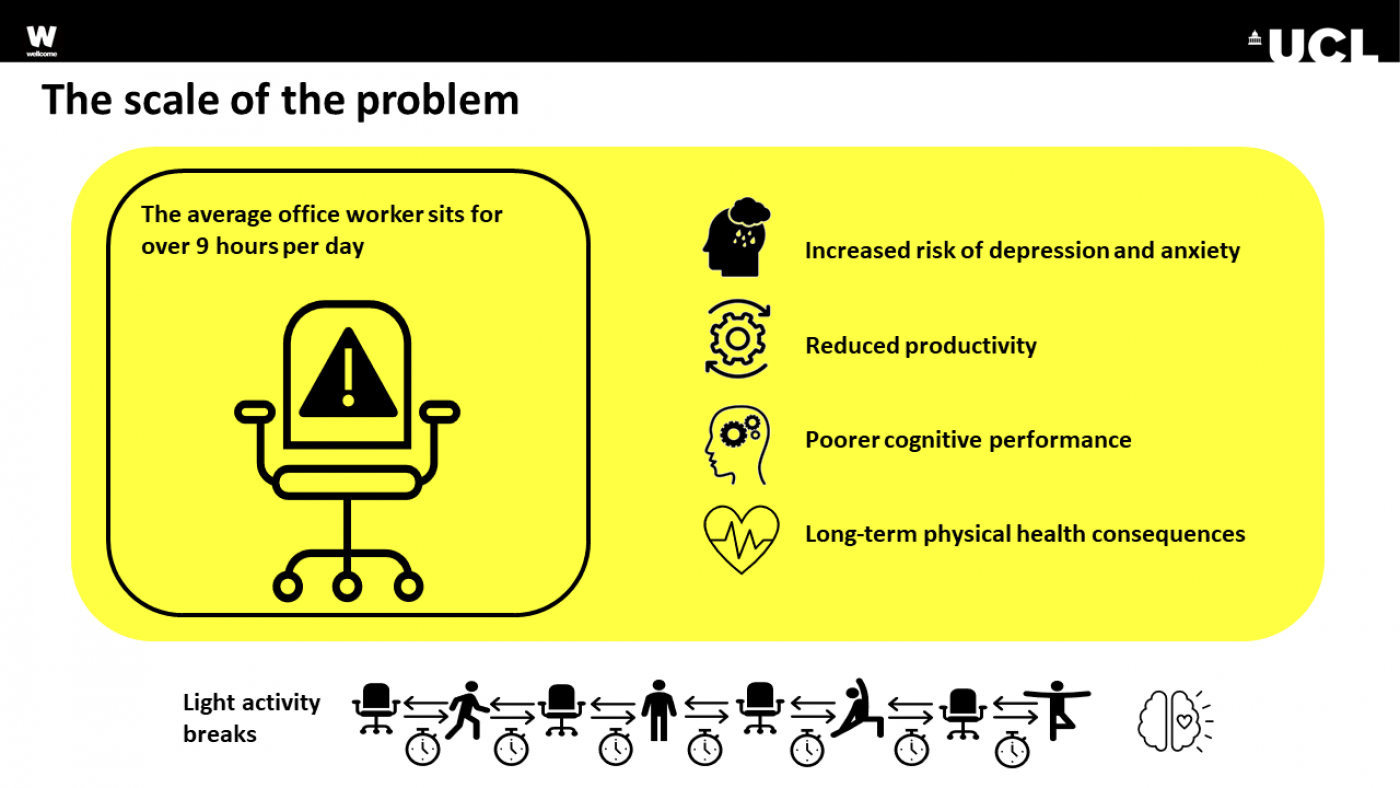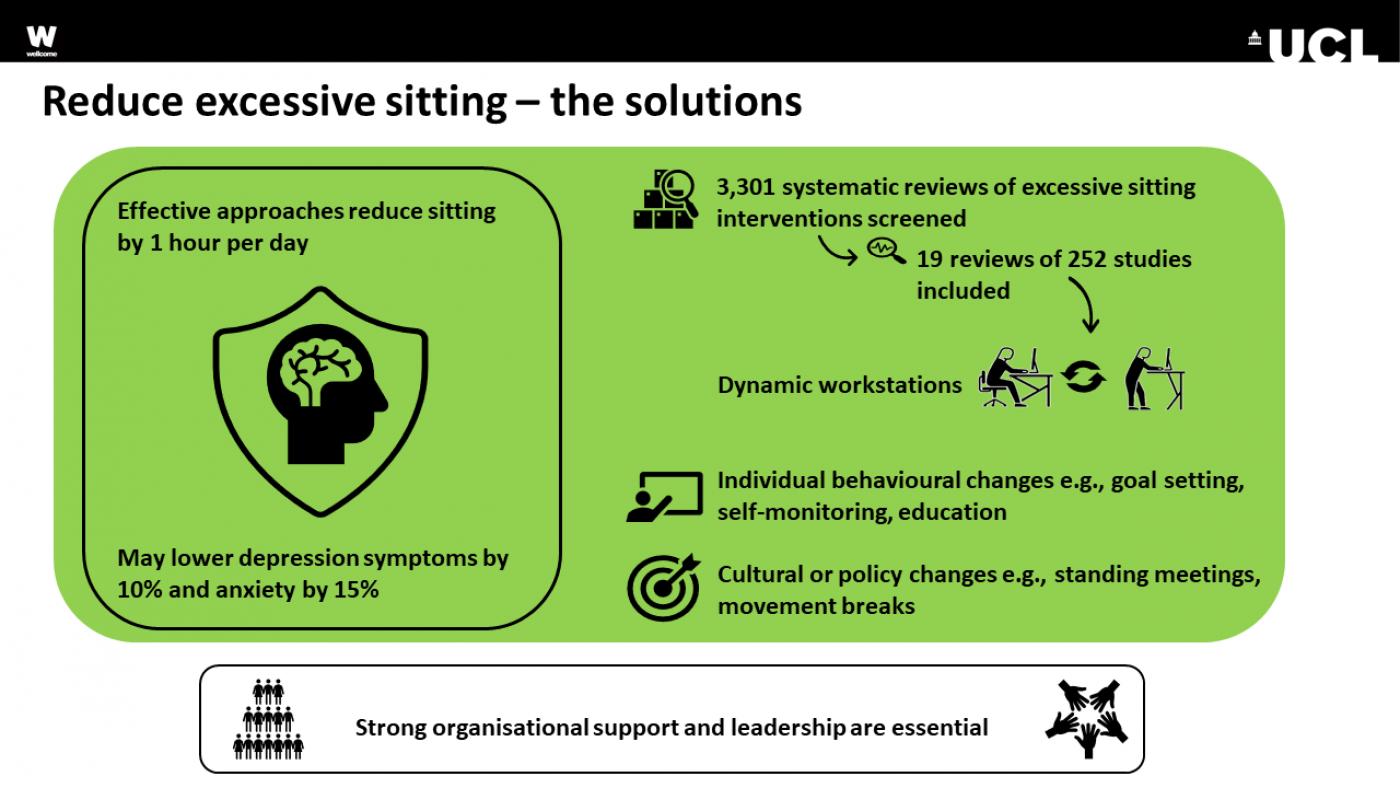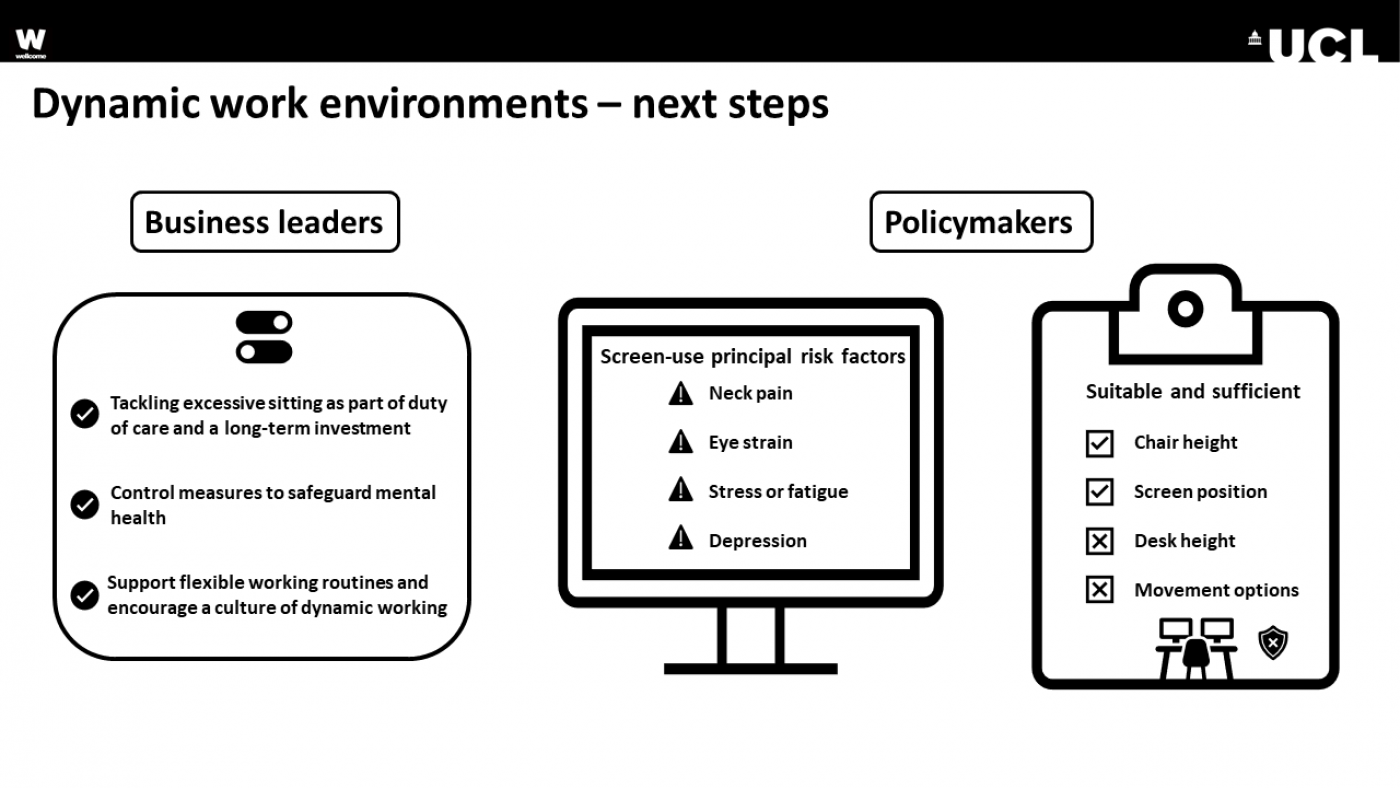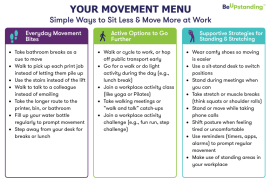A new report, funded by Wellcome, explores the potential health risks associated with high levels of occupational sitting and methods to reduce excessive sitting in the workplace or home working environment. Below is a summary of the report, taken from here. A full summary of the report can be found here, while a summary presentation of our key findings can be found here, and a podcast can be found here. BeUpstanding investigators David Dunstan and Genevieve Healy were co-authors on the report, which was led by Aaron Kandola.
Full author list: Aaron Kandola, Jessica Rees, Brendon Stubbs, David W Dunstan, Genevieve N Healy, Joseph F Hayes
Background
Due to the rising prevalence of desk-based work, excessive sitting represents an emerging occupational health and safety issue. Employed adults are typically sitting for over 9 hours per day. Spending large periods of the day seated with insufficient active breaks increases the risk of several physical and mental health conditions, including depression and anxiety disorders. Allowing or facilitating excessive sitting in the workplace can affect employees’ mental health and compromise the duty of care between an employer and employee. Combatting excessive occupational sitting with regular breaks involving light activity for a couple of minutes every 30 minutes may reduce this risk while also enhancing productivity by promoting cognitive performance and reducing absenteeism and presenteeism. Over time, these productivity improvements will produce economic gains for employers.
Most depression and anxiety disorders first occur during late adolescence and young adulthood, around the same time that many enter the workplace. Focusing on younger employees during this crucial period can produce cumulative long-term benefits for preventing or intervening early on depression and anxiety disorders. While employers are increasingly implementing measures to improve employee mental health, many approaches are not evidence-based. We systematically searched online databases to identify and summarise evidence on the potential risks of excessive occupational sitting, methods of reducing excessive sitting in the workplace or home-working environment, and the changes necessary to tackle this emerging health and safety issue.

After screening a total of 5,628 systematic reviews, 27 were eligible for inclusion in the full report, containing data from 352 individual studies. We found several evidence-based strategies that can reduce occupational sitting by at least an hour per 8-hour workday. They do not compromise work performance and may improve wellbeing, fatigue, cognition, and stress. For example, every hour reduction in daily sitting can decrease depression symptoms by around 10%, and anxiety symptoms by approximately 15%. The most effective strategies included providing dynamic workstations (e.g., sit-stand desks) and behavioural and cultural strategies that support and promote an active working environment. Most of these components are deliverable in home and office settings using digital platforms. Strong organisational support and visible participation of co-workers, managers, and role models are essential to these strategies’ success.
While further economic evaluations are necessary, there was some evidence that large-scale interventions provide a substantial return on investment through reduced absenteeism, presenteeism, and increased productivity. However, a paucity of studies included sufficient follow-up periods to examine longer-term impacts on productivity or sustainability. Most studies also focussed on improving physical health and lacked sufficient measures of mental health. Few studies specifically targeted interventions at young people. But the principles and findings of these studies remain applicable to young people as the relationships between sitting, movement, and mental health are consistent across different age groups.
 Conclusions and next steps
Conclusions and next steps
There is an urgent need for evidence-based methods of safeguarding employees’ mental health, particularly in younger employees. Overwhelming evidence suggests that excessive sitting increases employees’ physical and mental health risks, but it is modifiable. Future research must continue to evaluate the longer-term impact of interventions for reducing occupational sitting on cost-effectiveness and mental health. Employers already provide routine display screen equipment and workstation assessments and adjustments as part of their duty of care to employees. However, these typically focus on preventing musculoskeletal and visual problems or stress.
Policymakers and employers should include excessive sitting as a principal risk factor associated with desk-based work to ensure the provision of control measures that protect mental health. Employers and employees must work together to design working routines that encourage regular breaks for movement or posture changes that prevent excessive sitting. Coordinated actions from policymakers, employers, and employees will be necessary to produce sustainable reductions in excessive occupational sitting, protect employee wellbeing, and enhance productivity.

![]()










Comments are closed.